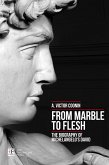In the 14th century, after the Hell and Purgatory, Dante Alighieri writes "Paradise": this is the third and last part of the Divine Comedy. Is an allegory which tells of Dante's journey through the heavens, guided by Beatrice, who symbolises theology. In the poem, Paradise is depicted as a series of concentric spheres surrounding the Earth, the Moon, mercury, Venus, Sun, Mars, Jupiter, Saturn, fixed stars, the Primum Mobile and finally, the Empyrean. Allegorically, the poem represents the ascent of the soul. Beatrice, Dante's Guide through the nine celestial spheres of heaven, to heaven, which is the dwelling place of God. The nine spheres are concentric, as in standard geocentric model Medieval cosmology, which was derived by Ptolemy. As in "purgatory", the structure of Dante's Paradiso is then of the form 1 + 9 = 10, with one of the ten regions different in nature from the other nine. During his voyage, Dante meets and converses with several beate souls. The structure of the Paradise is based on four cardinal virtues: prudence, justice, temperance and fortitude and three theological virtues: faith, hope and charity.
Hinweis: Dieser Artikel kann nur an eine deutsche Lieferadresse ausgeliefert werden.
Hinweis: Dieser Artikel kann nur an eine deutsche Lieferadresse ausgeliefert werden.









